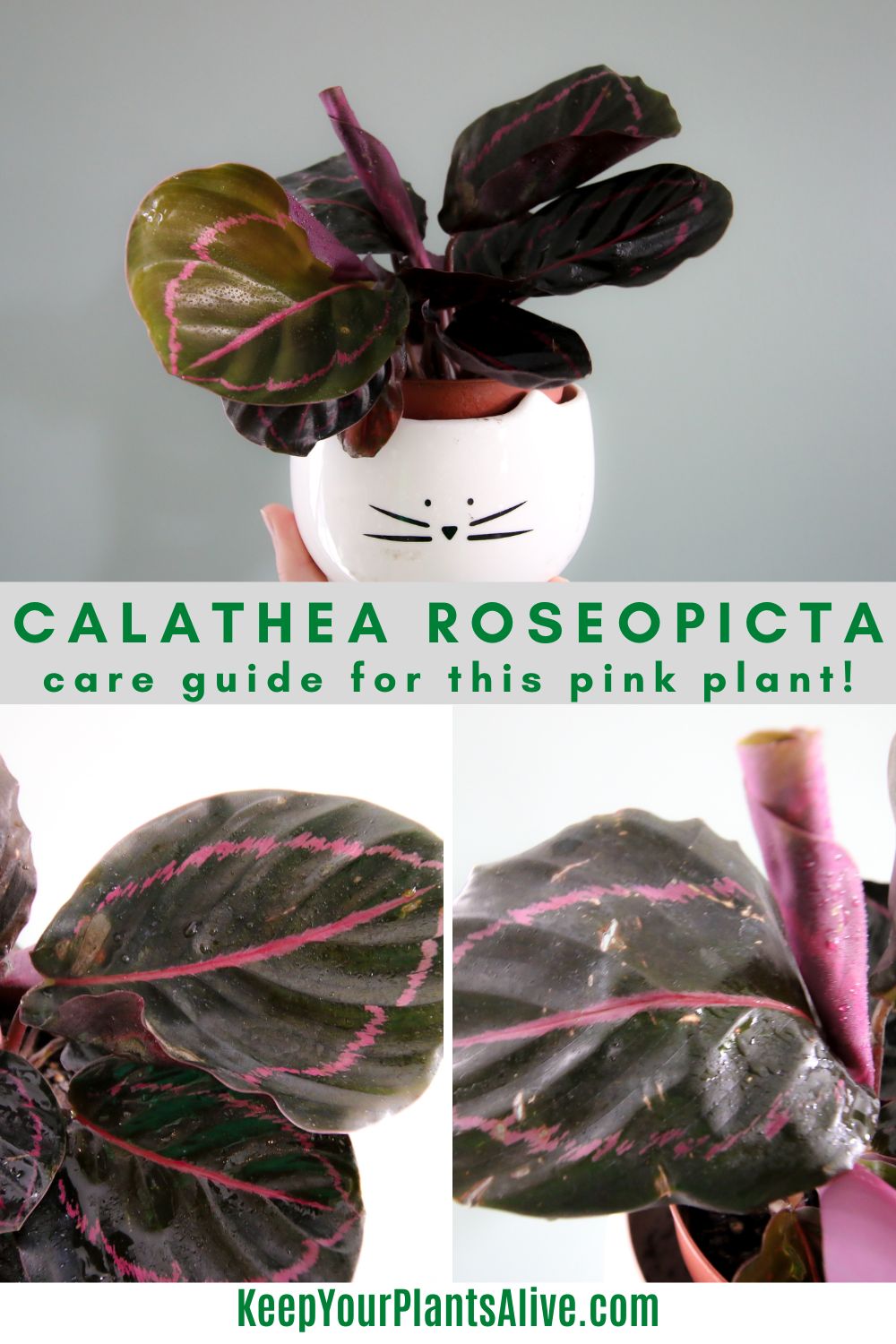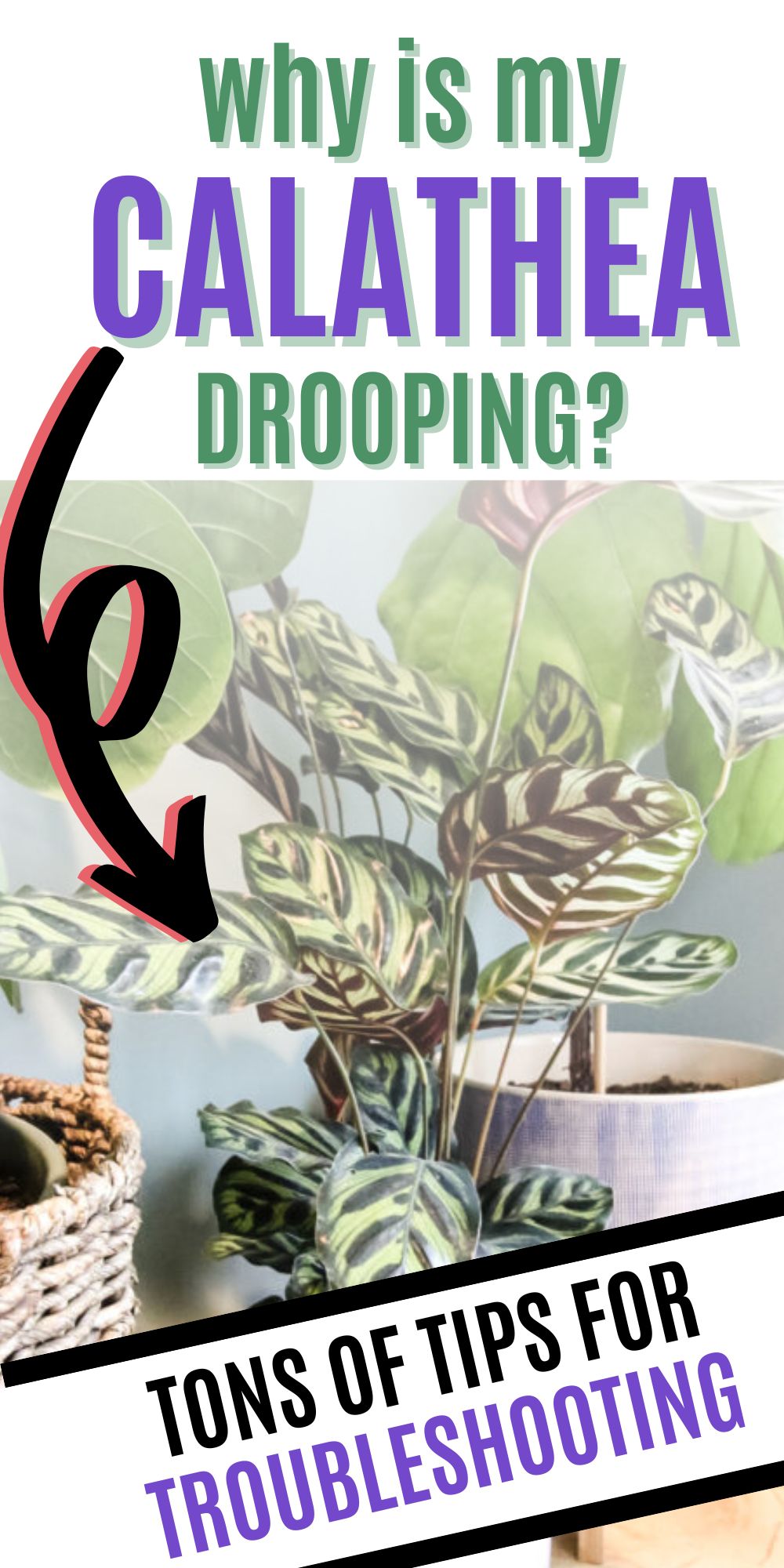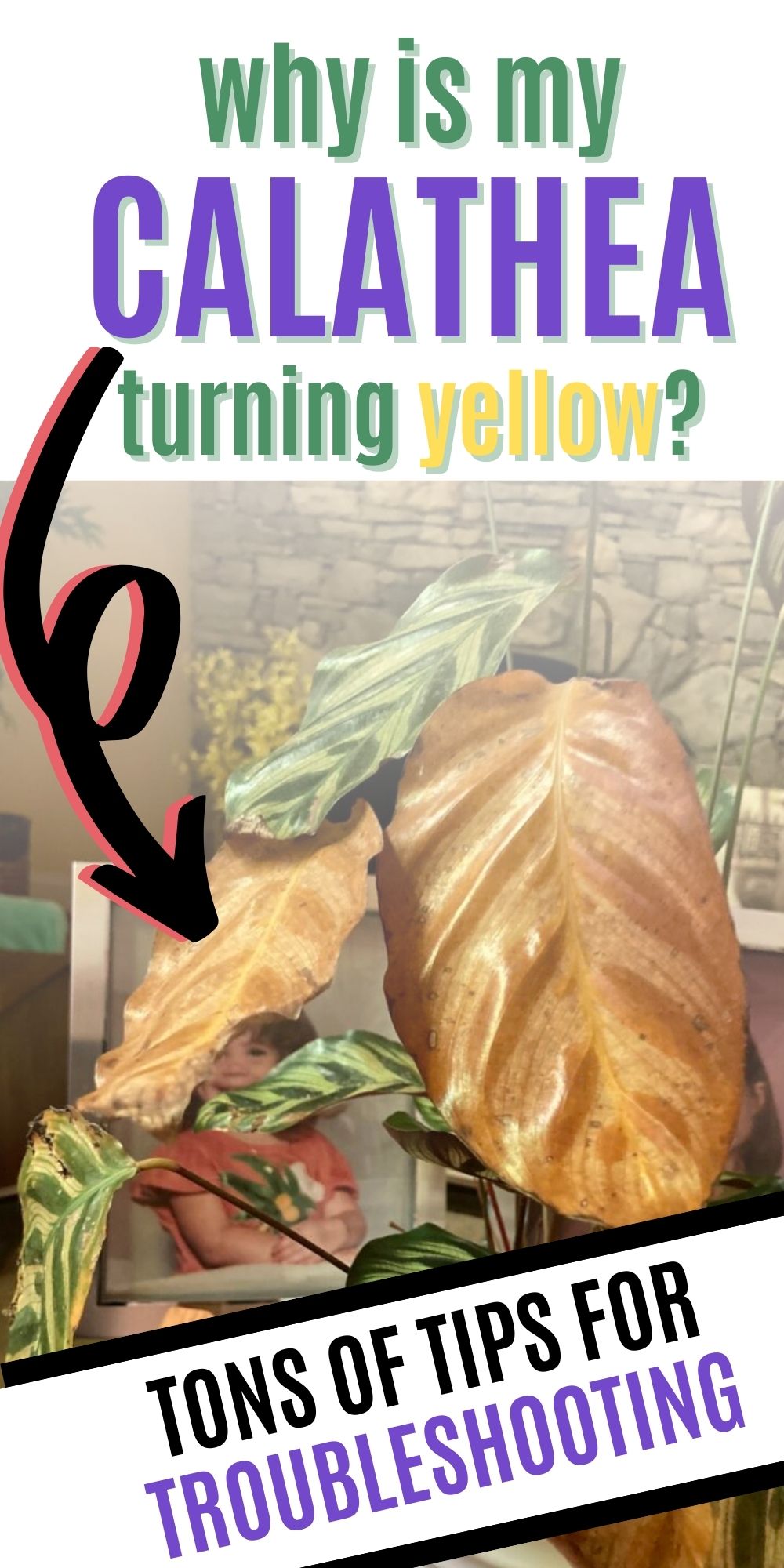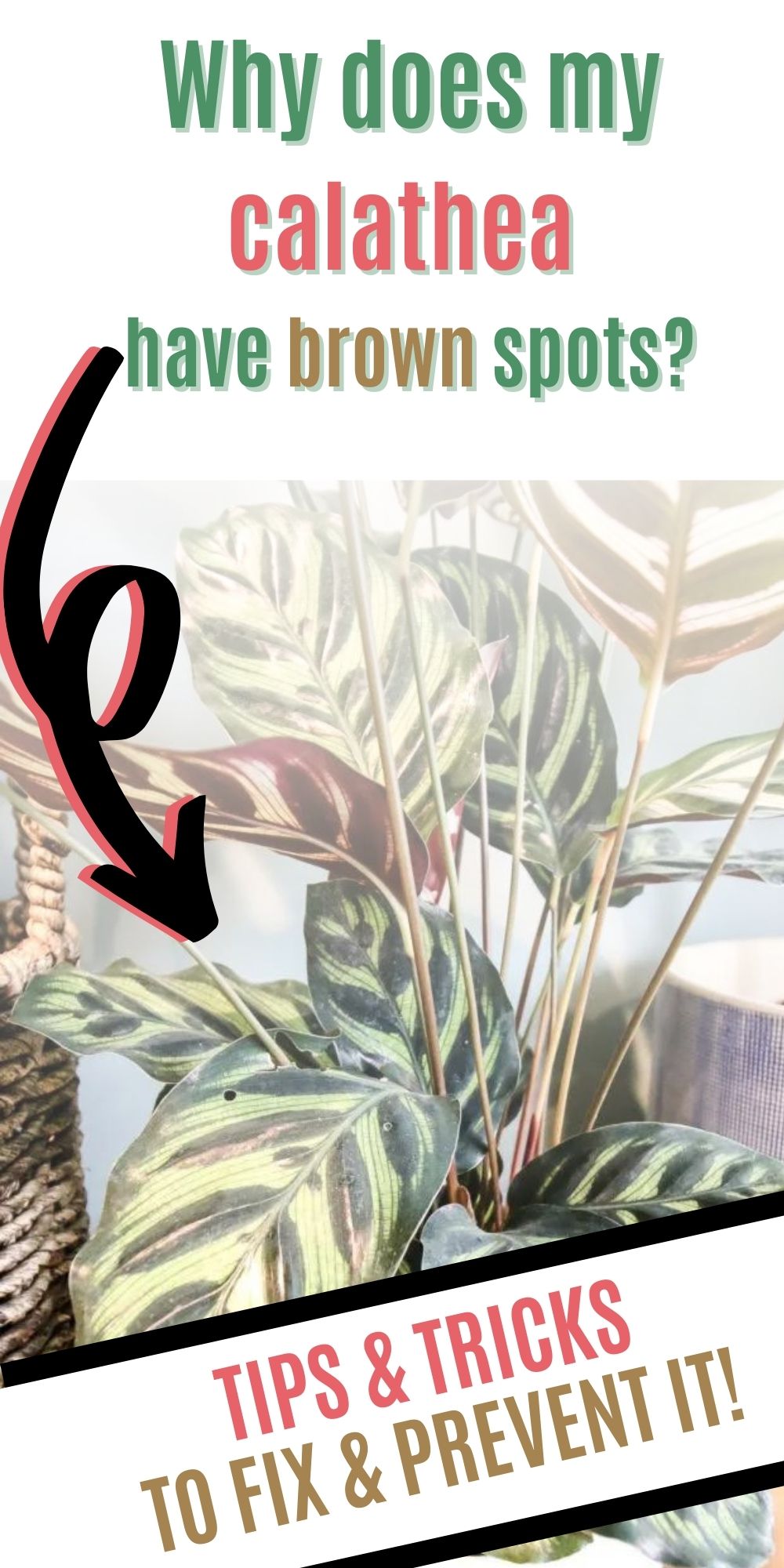Wondering why your calathea leaves are curling? Let's diagnose this common problem and get your plant healthy again!
Calatheas are super popular houseplants. They come in many varieties but most feature big, round leaves with gorgeous, colorful veining.
Theses plants are generally fairly easy to keep happy and a beautiful addition to any houseplant collection.
So, if your calathea plant isn't doing well, you might be a little puzzled.
Even easy plants can have problems and need some troubleshooting.
So, today we are going to chat about curling leaves on a calathea plant and what to do about them!
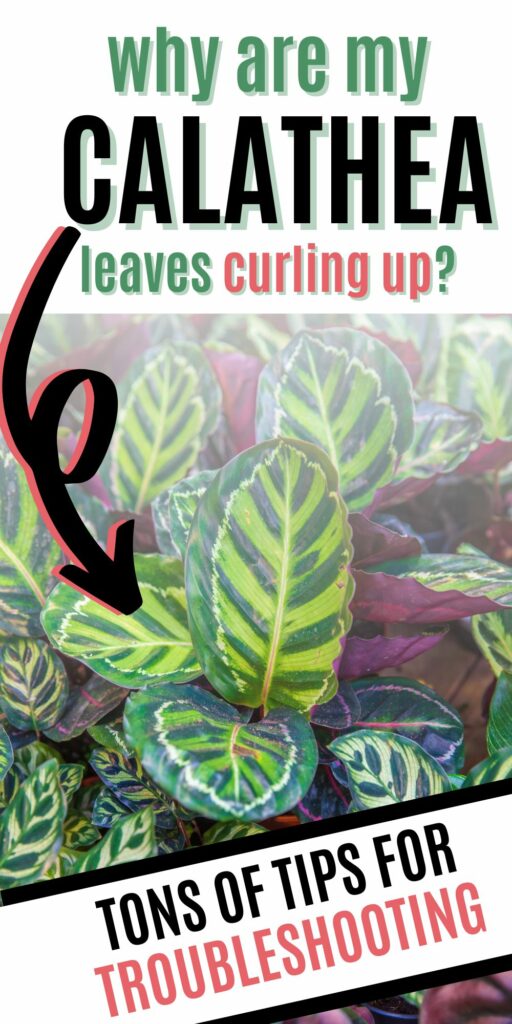
More about calathea plants:
- Peacock calathea care guide
- Calathea Network care guide
- Calathea roseopicta plant care guide
- Why are my calathea leaves sticky?
- Why are my calathea leaves curling?
- Why does my calathea plant have brown tips?
- Why is my calathea drooping?
- Why are my calathea leaves turning yellow?
Free printable Calathea care guide
Join the (free!) KeepYourPlantsAlive+ community to access this exclusive printable plant care guide! Once you sign up, you can right click & save the JPG care guide. Or keep scrolling for more!
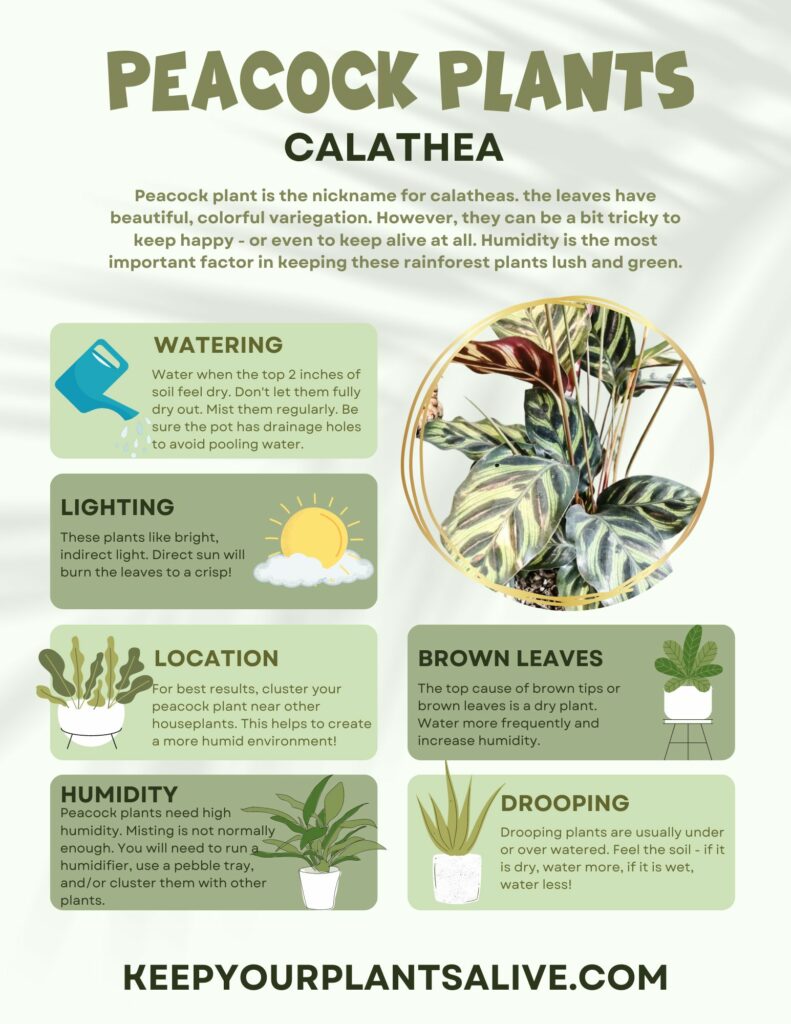
Why are my calathea leaves curling?
Curling leaves on your calathea plant usually indicate that the plant is having watering problems.
These plants store water in their thick leaves. When the soil runs out of moisture that they can pull from, they start "drinking" the water reserves in their leaves, and they dry up.
Remember - some calathea leaves open and close every night (like praying hands - hence the name prayer plant). This is not what we are talking about.
Curling leaves will curl in from the edges and stay curled all day long.
Leaves curling inwards - cupping
If your calathea plant leaves are curling upwards and forming little cups, this usually means that the plant is soggy. That could indicate over watering, poor drainage, root rot, or low light.
Check out our guide on how to drill drainage holes in a ceramic pot!
Leaves curling outwards - doming
If your calathea plant leaves are curling downwards and forming domes, that usually indicates dryness. This could be caused by under watering, lack of humidity, too high of temperatures, too much of a draft. It can also be caused by lack of nutrients.
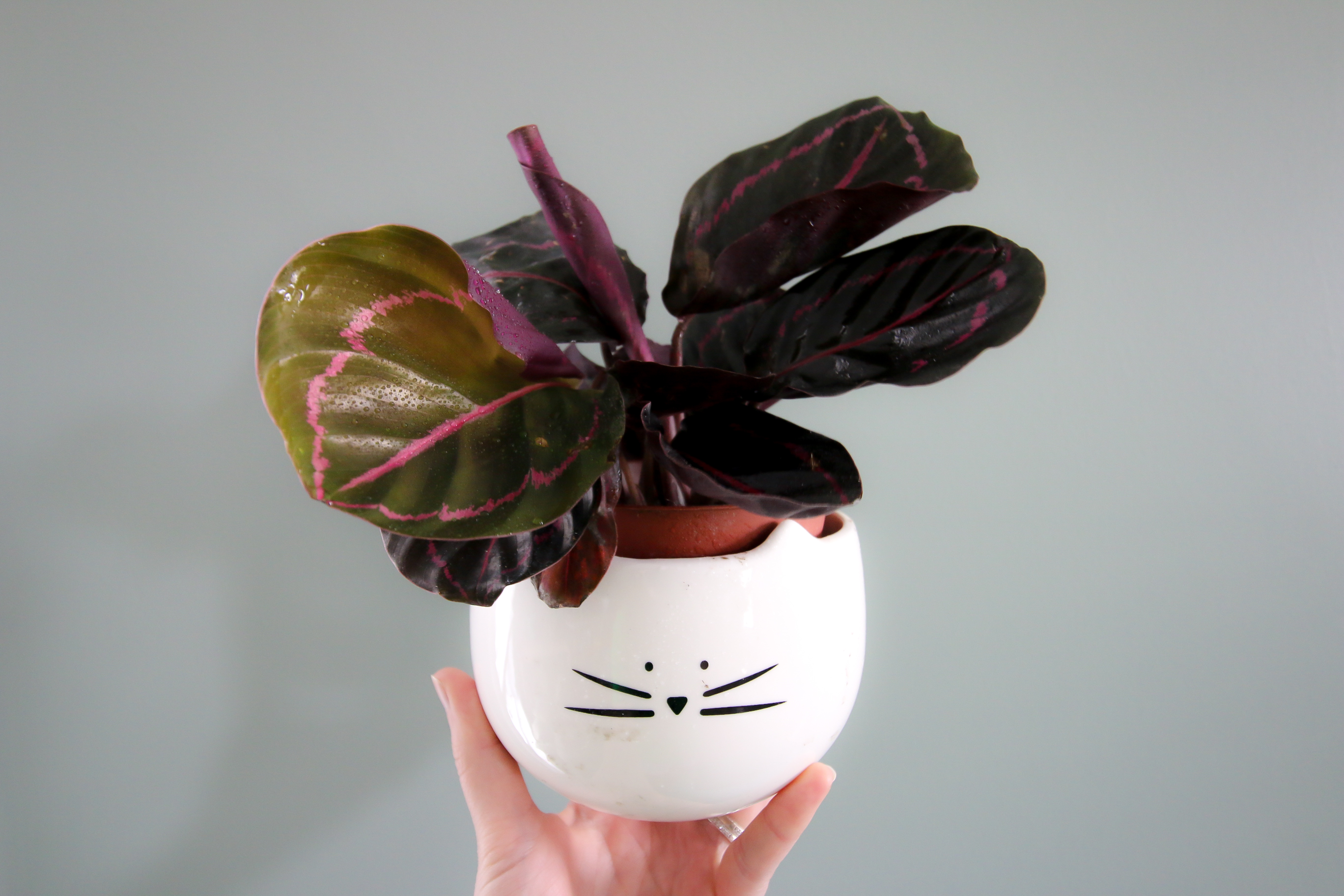
How to tell what's wrong with your calathea
If you suspect that there is a watering problem with your calathea, it's easy to tell if the plant is over watered or under watered.
Simply feel the soil with your hand. If it feels wet, especially on the surface of the soil and you haven't watered it in a while, it's probably overwatered. If the soil feels very hard, compact and dry, it is probably under watered.
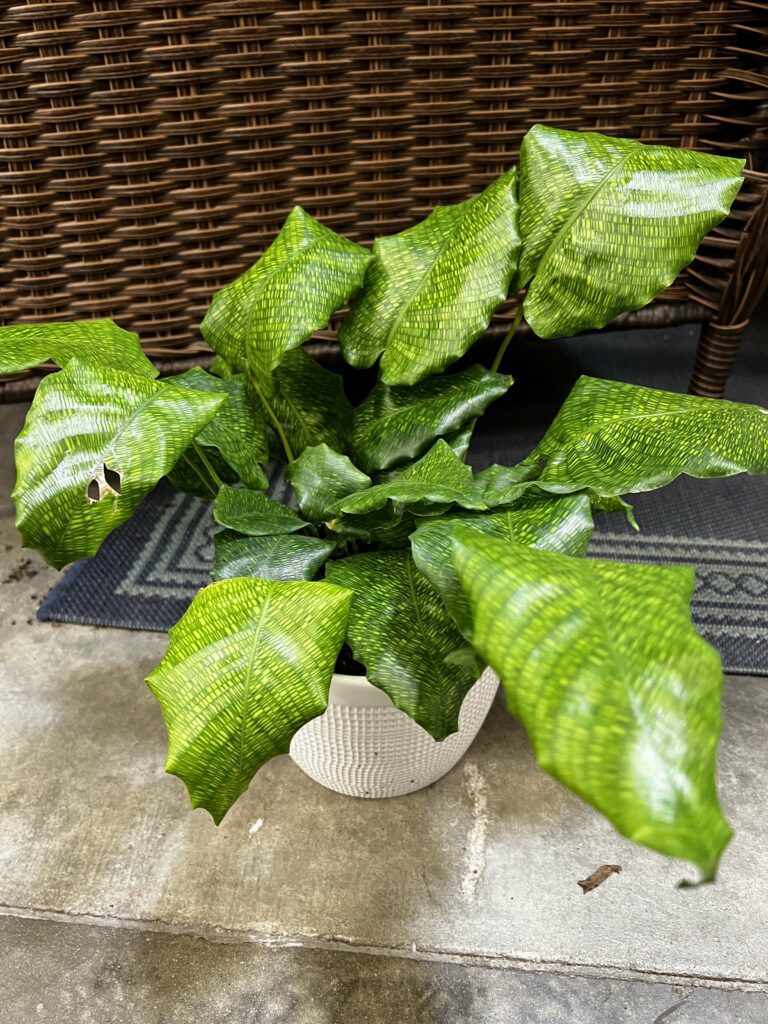
How to fix curling calathea leaves
Here are a few of the things you can check out to fix your curling calathea.
New leaves
New leaves curling? Don't panic! It's natural for new leaves to take a little while to unfurl. This is 100% normal for calathea plants.
Over watering
Over watering will make your plant sad. Plants absorb water and oxygen through their roots. Too much water in the soil means the roots can't get any oxygen and will suffocate and die.
If your roots start cupping upwards, that could indicated that your plant is over watered. The plant might also get yellow leaves, drop leaves, or get black mushy spots on the leaves.
Check your soil - if it is very wet, the plant is over watered.
You can use one of these methods to dry out the existing soil. But, if the soil is VERY wet and the plant is mad about it, I suggest repotting.
Pull the plant out gently and dump all of the soil. Re-pot (the same pot is fine) with fresh soil.
Be sure to add drainage to the pot and let the plant dry out more between waterings.
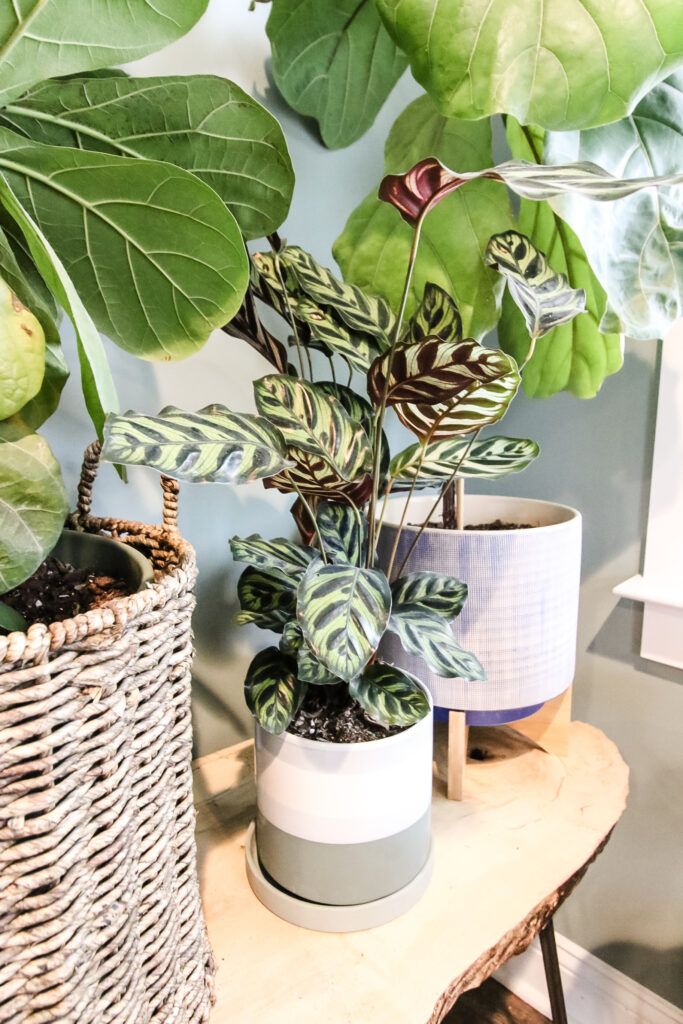
Soggy roots (drainage)
This is highly related to overwatering, but if your pot does not have proper drainage, that can cause curling of the leaves.
A plant in a pot needs big drainage holes to avoid pooling water that can rot the roots. Here's our guide on how to drill holes in a ceramic pot!
Too much sun
Too much sun can dry out your plant and make the leaves wilt and look sad. If the leaves start to curl downward, it could indicate it's getting too much sun.
Even if your watering is on a great schedule, plants in full sun will dry out more and quicker than plants in indirect sun or shade.
Check the soil - is it very dry and hard? If so, you will want to break it up a bit or even add fresh potting mix before watering. Or, just re-pot in fresh soil.
Move you plant from south facing windows to west or east facing windows for gentler light!
Humidity
Calathea love humidity! If the air is very dry, you can increase humidity levels. Mist your plant, add a humidifier, or place a tray of water nearby!
Humidity (or lack thereof) is one of the top killers of calathea. It's super important to keep them in a humid environment to keep them happy!

Lack of circulation
If your air is very stagnant, that could cause plant leaves to curl. Consider placing a fan nearby to create a bit of a breeze. This can also help if the soil is growing mold or attracting gnats!
Lack of Nutrients
Plants need nutrients as well as water and light. Calathea can sometimes get a nitrogen deficiency, leading to curling leaves.
Give your calathea a houseplant fertilizer once a month during the warm growing season to help with nutrients!
Root problems
The roots are how plants absorb their food. If the plant is root bound, the roots are too crowded in the pot and can't get enough nutrients. Move it to a pot 1-2 inches larger and throw in some fresh potting soil while you are at it!
If the plant has been over watered, it could have root rot. The roots would be black, mushy, and stinky. Remove rotten roots and repot in fresh soil.
Pests
Calathea definitely tend to attract pests, especially spider mites.
Check the underside of the leaves for a sticky white substance. This indicates that the bug has been there sucking the sap out of the plant leaves.
Any more questions about your calathea?
Thanks for reading!


Hey there, I'm Morgan, a houseplant enthusiast from sunny Charleston, South Carolina. Growing up surrounded by my mom's lush orchids and African violets, I discovered the magic of bringing nature indoors. Thanks to the pandemic, I delved deeper into houseplants, discovering their power to uplift moods and transform spaces. I'm here to spill all my secrets, helping you pick the perfect houseplant - and make it happy. Let's keep your plants alive, together! 😊

